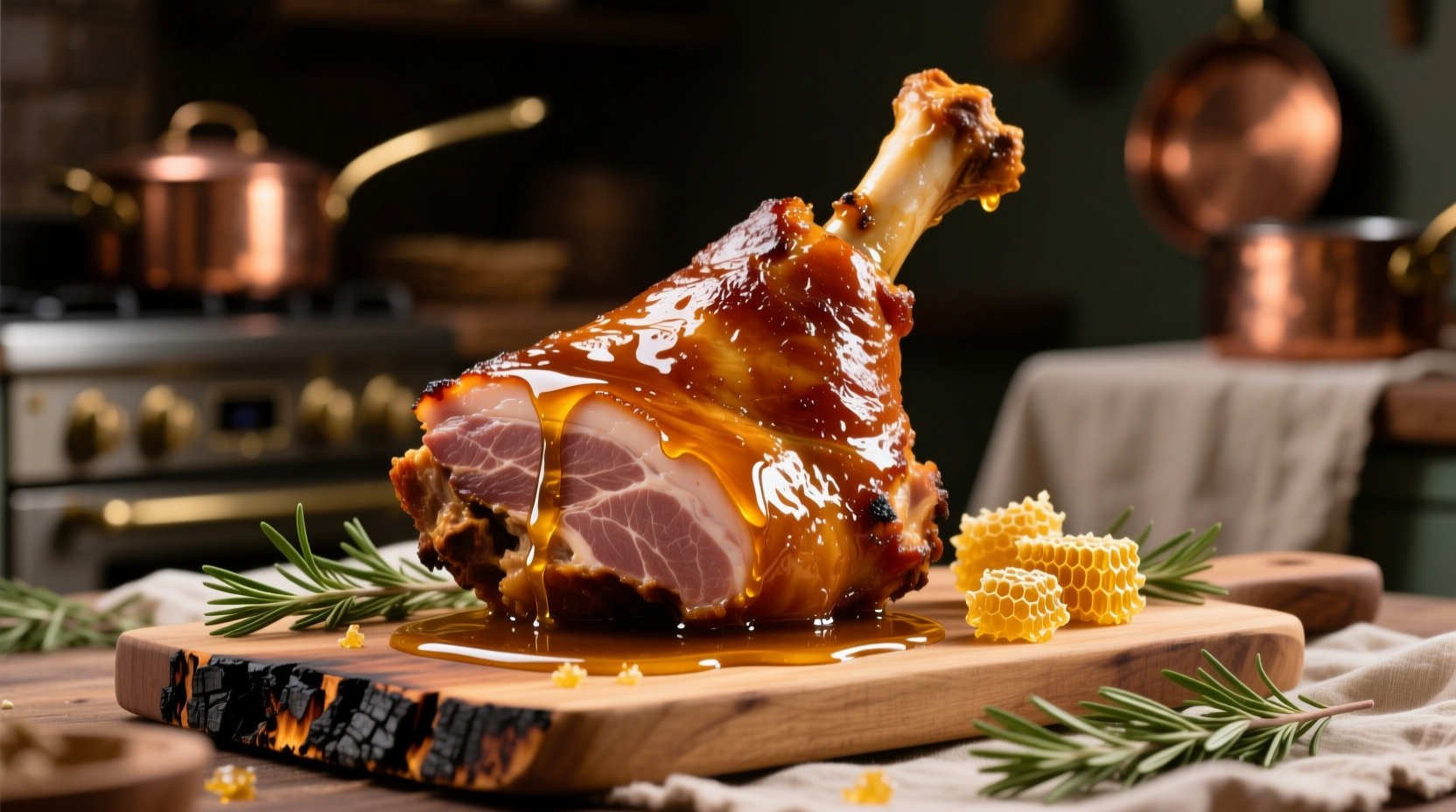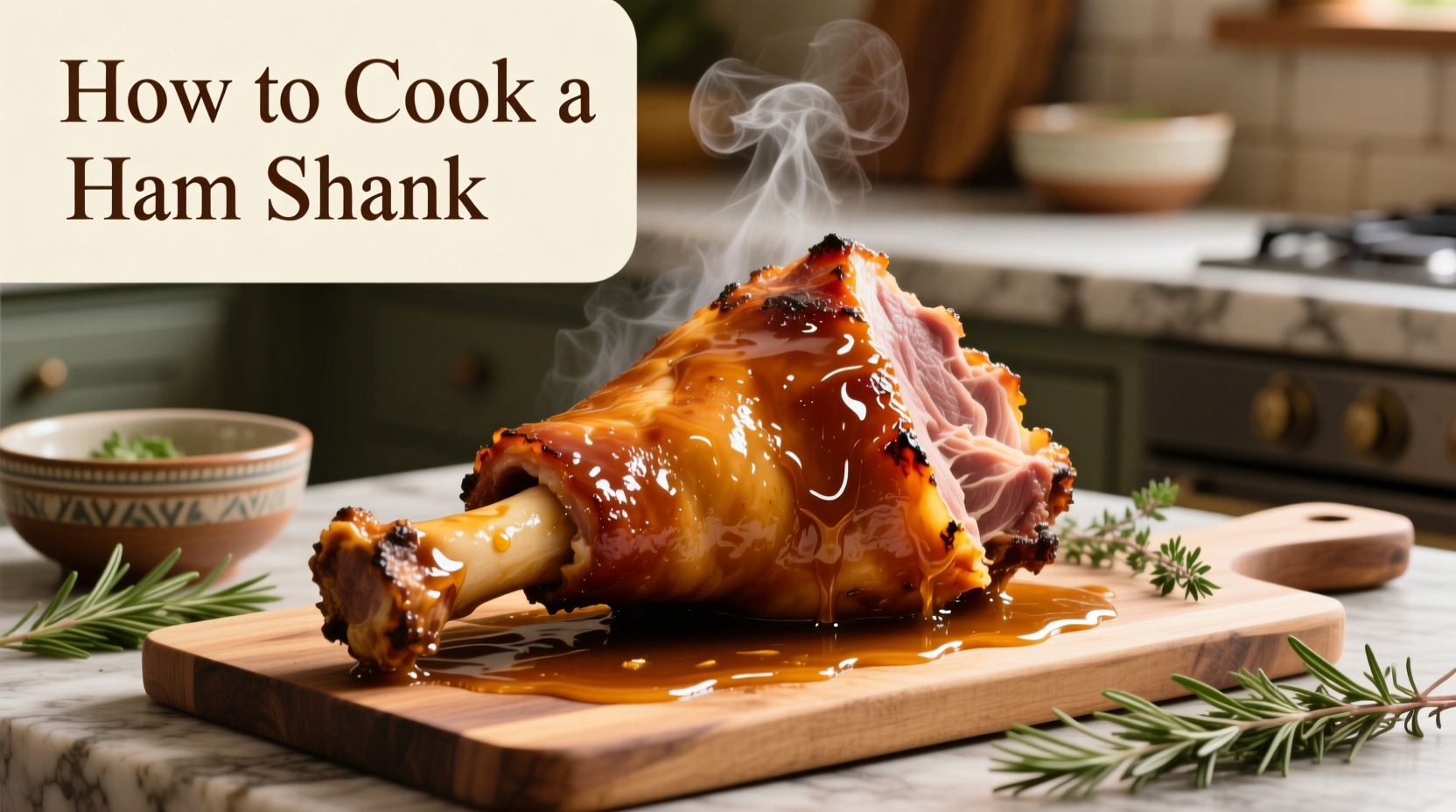The Complete Guide to Cooking Ham Shank: Flavorful Results Every Time
Cooking a ham shank properly transforms this often-overlooked cut into a showstopper meal. Unlike pre-sliced ham, the shank—the lower portion of the leg—retains exceptional moisture and develops rich flavor when prepared correctly. Whether you're planning a holiday feast or a Sunday dinner, mastering ham shank preparation delivers impressive results with relatively simple techniques.Why Ham Shank Deserves Your Attention
Ham shank offers unique advantages over other pork cuts. The bone-in structure provides built-in flavor infusion while the marbling ensures juiciness even after extended cooking. According to the USDA Food Safety and Inspection Service, properly cooked ham shank reaches safe internal temperatures while maintaining optimal texture when following recommended time and temperature guidelines.| Cooking Method | Time per Pound | Recommended Temperature | Best For |
|---|---|---|---|
| Oven Roasting | 20-25 minutes | 325°F (163°C) | Crispy exterior, caramelized glaze |
| Slow Cooker | 2-3 hours | Low setting | Tender, fall-off-the-bone texture |
| Instant Pot | 45-60 minutes | High pressure | Quick preparation, moist results |
Selecting and Preparing Your Ham Shank
Begin with a quality shank. Look for pinkish-red meat with firm, white fat. The USDA recommends choosing shanks labeled "fully cooked" or "cook-before-eating" depending on your preference. Fully cooked shanks require less time but benefit from reheating with added flavors. Preparation steps:- Thaw frozen shanks in the refrigerator (allow 4-5 hours per pound)
- Remove packaging and rinse under cold water
- Pat dry thoroughly with paper towels
- Score the fat cap in a diamond pattern (1/4 inch deep)
- Apply dry rub or let sit uncovered in refrigerator overnight for crispier skin

Perfect Cooking Techniques for Ham Shank
Oven Method (Most Recommended):- Preheat oven to 325°F (163°C)
- Place shank fat-side up in roasting pan with 1 cup liquid (water, broth, or apple cider)
- Cover loosely with foil
- Cook 20-25 minutes per pound until internal temperature reaches 140°F (60°C)
- Remove foil, apply glaze, and cook uncovered for final 20-30 minutes
- Rest 15 minutes before carving
Flavor Enhancements and Glaze Options
The final 30 minutes of cooking presents the perfect opportunity to add flavor. Popular glaze combinations include:- Brown sugar, Dijon mustard, and apple cider vinegar
- Pineapple juice, honey, and cloves
- Maple syrup, bourbon, and orange zest
- Cherry preserves and balsamic reduction
Historical Evolution of Ham Shank Preparation
Ham shank cooking has evolved significantly over centuries. Originally preserved through dry-curing and smoking for preservation, modern refrigeration allows for more versatile preparation methods. According to historical culinary records from the American Food Heritage Project, the transition from purely preserved meats to fresh-cooked preparations began in the early 20th century as home refrigeration became widespread. This evolution enabled home cooks to focus on flavor development rather than preservation alone, leading to today's diverse cooking techniques.Serving and Storage Guidelines
Carve against the grain for maximum tenderness, slicing perpendicular to the bone. Pair with traditional sides like scalloped potatoes, roasted root vegetables, or creamy polenta. Leftovers maintain quality for 3-4 days when stored in airtight containers. The bone makes excellent stock for soups and beans.Frequently Asked Questions
How do I know when my ham shank is fully cooked?
Use a meat thermometer to check internal temperature. Fully cooked ham shanks should reach 140°F (60°C) measured in the thickest part away from the bone. The meat should feel firm but yield slightly when pressed, and juices should run clear.
Can I cook a frozen ham shank without thawing?
Yes, but cooking time increases by approximately 50%. Place frozen shank in roasting pan with liquid, cover tightly with foil, and cook at 325°F (163°C) for about 35-40 minutes per pound. Check temperature regularly during the final hour to prevent overcooking.
What’s the difference between ham hock and ham shank?
Ham shank comes from the lower portion of the pig's leg and contains more meat, making it suitable as a main dish. Ham hock (or pork knuckle) is the joint portion higher up the leg with less meat and more connective tissue, typically used for flavoring soups and stews rather than as a standalone entrée.
Why is my ham shank tough after cooking?
Toughness usually results from insufficient cooking time or temperature. Ham shank requires slow, low-temperature cooking to break down collagen into gelatin. Ensure you're cooking at 325°F (163°C) for the proper duration (20-25 minutes per pound). If already cooked, slice very thinly against the grain to improve tenderness.











 浙公网安备
33010002000092号
浙公网安备
33010002000092号 浙B2-20120091-4
浙B2-20120091-4